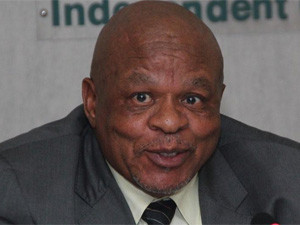
Spectrum relief is finally on the table for under-pressure mobile operators, as the regulator has listed allocating high-demand spectrum as one of its priorities for the next financial year.
However, operators - and end-users - should not get too excited yet, as government still has other aspects to put in place and a detailed roadmap needs to be released before spectrum can be allocated.
Mobile operators have been crying for additional spectrum for some time, saying the lack of access to frequency in the 800MHz, 2.6GHz and 3.5GHz ranges is hampering their ability to roll-out high-speed broadband services such as long-term evolution (LTE) and its successor, LTE-Advanced.
Thwarted
Telkom, which has access to the spectrum it needs, has already pushed out LTE-A in Parkhurst, with plans to connect another 50 suburbs to the technology - which delivers speeds of up to 150Mbps - by next March. However, the lack of spectrum has hamstrung other operators' ability to provide faster broadband.
Just last month, Vodacom said it was desperate for more spectrum, and was not picky as to how the regulator ran the allocation process, as long as it could also benefit from the spoils. Vodacom, SA's largest operator, echoed MTN's concerns that the surge in data traffic would be problematic without access to more frequency.
Now, Independent Communications Authority of SA (ICASA) chairman Stephen Mncube has put allocation of high-speed spectrum back on the table, saying the regulator's focus for the 2015/16 financial year and beyond included issuing an invitation to apply for high-demand spectrum. This, he said, would complete the spectrum assignment process contained in the International Mobile Telephony roadmap.
Vodacom spokesman Richard Boorman says the company is "pleased to hear that the assignment of high-demand spectrum [needed to support growing data demand] is being dealt with as a priority and [we] look forward to supporting the process".
Not so fast
While Ovum analyst Richard Hurst says there may finally be "light at the end of the tunnel", it is a bit premature to be getting too excited as SA does not have a good track record in issuing spectrum.
Allocation of spectrum also seems to depend on the Department of Communications (DOC) issuing a policy directive; the exact same hurdle that scuttled the end-2011 allocation of spectrum in the 2.6GHz and 3.5GHz ranges a mere four months after ICASA put an allocation framework on the table. Neither the DOC nor ICASA were able to comment this morning on where this process is currently.

Allocating more spectrum in the 2.6GHz and 3.5GHz ranges has been on the cards since 2006, but invitations to apply for frequency in the bands were withdrawn in June 2010. Since March 2012 - when the framework was withdrawn - there has again been very little movement towards auctioning the spectrum.
Independent telecoms researcher Samantha Perry says "while it's good to see ICASA has the licensing of high-demand spectrum in its sights, I would like to see some sort of plan of action with concrete deadlines around this, I think, before we start getting too excited".
Hurst notes mobile operators have been hobbled for years by the lack of spectrum, and allocation of more frequency will enable them to fast-track high-speed broadband and the associated benefits. He says benefits include the ability for users and companies to stream content, lower prices, and more network use - which will bolster revenue streams for operators facing flat top-line growth as voice revenue continues to decline.
Share